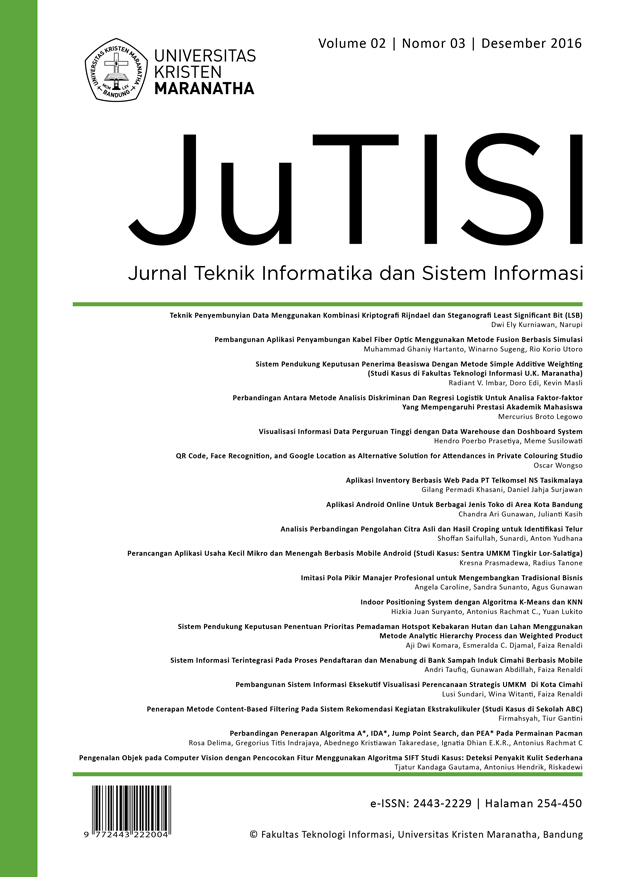Pengenalan Objek pada Computer Vision dengan Pencocokan Fitur Menggunakan Algoritma SIFT Studi Kasus: Deteksi Penyakit Kulit Sederhana
Main Article Content
Abstract
Human vision can do amazing things such as recognizing people or objects, navigating through obstacles, recognizing the mood in a scene, and imagining stories. To do mimicry of the human vision, the computer requires a sensor that functions like the human eye and a computer program that serves as a data processor from the sensor. Computer vision is the science that uses image processing to make decisions based on images obtained from sensors. In other words, computer vision aims to build an intelligent machine that can "see". Computer vision can be used to detect skin diseases, for example, to detect disease Shingles (Herpes Zoster), Hives (Urticaria), Psoriasis, Eczema, Rosacea, Cold Sores (Fever Blisters), Rash, Razor Bumps, Skin Tags, Acne, Athlete's Foot, moles, Age or Liver Spots, Pityriasis Rosea, Melasma (Pregnancy Mask), Warts, and Seborrheic keratoses. Prewitt, Sobel, Roberts, and Canny operator are used to detect the edges of one or more objects. Then the results will be match with the results of edge detection image data base to determine the type of disease using Scale invariant Feature Transform (SIFT) algorithm. Skin Disease Detection Expert System will be implemented with C++ programming language, IDE MS Visual Studio 2010 and OpenCV 2.4 library. Keywords— computer vision, edge detection, SIFT algorithm, skin disease
Downloads
Download data is not yet available.
Article Details
How to Cite
[1]
T. K. Gautama, A. Hendrik, and R. Hendaya, “Pengenalan Objek pada Computer Vision dengan Pencocokan Fitur Menggunakan Algoritma SIFT Studi Kasus: Deteksi Penyakit Kulit Sederhana”, JuTISI, vol. 2, no. 3, Dec. 2016.
Section
Articles
This is an open-access article distributed under the terms of the Creative Commons Attribution-NonCommercial 4.0 International License (https://creativecommons.org/licenses/by-nc/4.0/) which permits unrestricted non-commercial used, distribution and reproduction in any medium.
This work is licensed under a Creative Commons Attribution-NonCommercial 4.0 International License.

